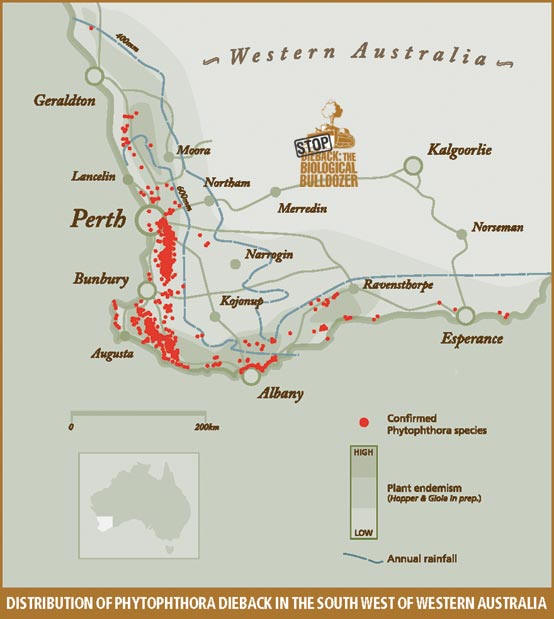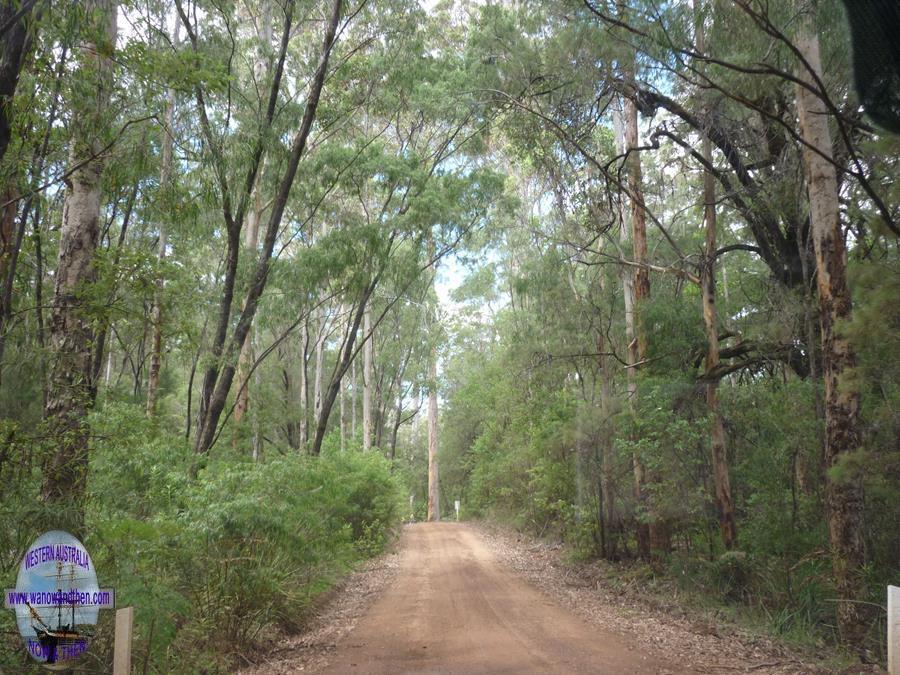|
Jarrah dieback is caused by a fungus called Phytophthora cinnamomi. The effects were first noticed as long ago as 1922 but was only in 1965 that Dr.
Jack Podger identified the organism that causes the trees to die. *
People unwittingly spread the disease through the south west simply by travelling through affected areas. By 1977 and estimated 280,000 ha was
infected. Large areas of forest were quarantined.
Although generally called Jarrah dieback, the fungus actually affects other species such as bull banksia. Today the term 'Phytophthora dieback' is
used to alleviate any confusion. The number of species that are affected by dieback fungus is thought to exceed 2000.
The fungus is most active in warm moist conditions such as heavy summer rains. It is during these events that it spreads most easily through
groundwater. The fungus kills by attacking the major tap roots of trees thereby cutting off their water supply. Trees can die within days and in
extreme cases within hours.
A variety of methods have been tried to limit the damage done the the fungus including increasing bio-hygiene and limiting the spread of infected
soils, burring under storey that is susceptible and replacing it with more resistant plants and using fungicides. Phosphite (phosphonate)
has been used with great effect to prevent infection but it is used only on trees with a diameter exceeding 10cm at chest height.
Mike Bielby (a retired school teacher) invented a new mechanism based on a car brake cylinder to use for injecting trees with Phosphite. This substantially
cut the cost of treating trees and a large number of community groups have been formed to help control the disease on private land and on local reserves.
Depending on the method of treatment (spraying or injection) treatment lasts from 2-5 years but considering the size of the area effected,
it is not a complete solution to the problem of dieback.
It is likely that Phytophthora cinnamomi will remain a permanent threat to our forests and that the only option is to continue to keep in place the
measures already adopted to containing the problem.
There is no cure for the disease so prevention remains the best way to deal with it.
* There is a theory that Phytophthora cinnamomi is not the primary cause of death in plants but is a secondary problem brought about by
other factors such as poor land management, the changees in water table and destruction of forest canopy.
The theory states that it is these other stressors that allow the fungus to overwhelm the plants that leads to the death of the infected plant.
The fungus has obviously been in the environment for much longer than dieback has been a problem so this theory does seem quite credible.

From http://www.dwg.org.au/index.cfm
|








